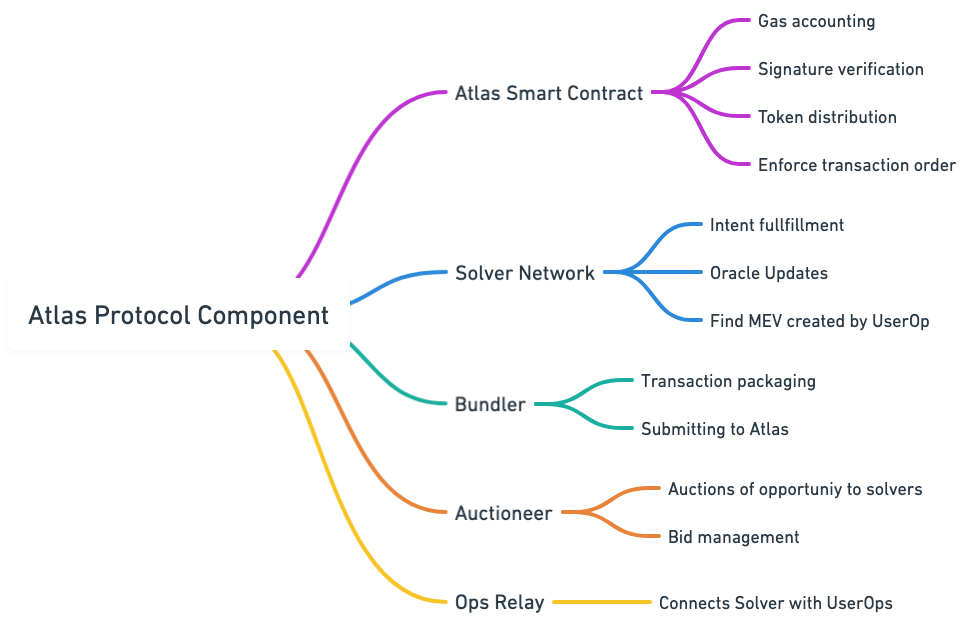Overview
The Atlas Protocol is a comprehensive blockchain infrastructure designed to provide industry-leading reliability, security, and flexibility for decentralized applications. By leveraging a modular and extensible architecture, Atlas Protocol offers a robust framework for executing complex transactions and maximizing value extraction in blockchain ecosystems.
Core Principles
- Modularity: Atlas Protocol separates concerns among various components, allowing for specialization and optimization of each part of the system.
- Flexibility: The modular design promotes adaptability, enabling seamless integration and upgrades without disrupting the overall system flow.
- Security: Built with a strong emphasis on trustlessness and decentralization, Atlas Protocol ensures that no single entity has undue control over the system.
- Efficiency: By optimizing transaction execution and value extraction, Atlas Protocol aims to maximize the efficiency of blockchain operations.
Key Components
The Atlas Protocol comprises several interconnected components, each playing a crucial role in the system:

Diagram of the Atlas Protocol Components.
- Atlas Entrypoint Contract: The central smart contract that manages the execution of User Operations and ensures the integrity of transaction sequences.
- Bundler: Aggregates operations into single transactions for efficient on-chain execution.
- Operations Relay (OR): Facilitates off-chain communication between system participants, enhancing privacy and performance.
- Solver Network: A decentralized network of entities that compete to provide optimal solutions for User Operations.
- Auctioneer Module: Manages the bidding process and selects the most beneficial solutions for execution.
Roles within Atlas Protocol
Atlas Protocol defines specific roles that interact within its ecosystem:
- Originator: Initiates the process by generating signed operations (typically the User).
- Solvers: Propose solutions to internalize Maximum Extractable Value (MEV) or fulfill specific intents.
- Auctioneer: Aggregates and sorts operations to select the optimal solution.
- Bundler: Compiles operations into executable transactions for on-chain inclusion.
Trustlessness and Decentralization
Atlas Protocol achieves trustlessness and decentralization through:
- Smart Contract Automation: Critical roles and processes are handled by smart contracts, eliminating the need for trusted intermediaries.
- Modular Architecture: Compartmentalization of functionalities enhances security and reduces the risk of system-wide vulnerabilities.
- Decentralized Participation: Multiple entities can participate as Solvers, Bundlers, or other roles, preventing centralization of power.
Flexibility and Customization
Atlas Protocol is designed to be infrastructure-agnostic, allowing for various implementation strategies:
- On-chain execution
- Cross-chain aggregation
- Hooks allow for custom logic to be executed at various points in the execution process
- Integration with service providers (e.g., BloXroute's BDN)
- Compatibility with specialized networks (e.g., SUAVE)
This flexibility enables developers to tailor the Atlas Protocol to their specific needs and constraints.
Conclusion
The Atlas Protocol represents a significant advancement in blockchain infrastructure, offering a comprehensive solution for efficient, secure, and flexible transaction execution. By combining modular design, decentralized architecture, and customizable components, Atlas Protocol provides a robust foundation for the next generation of decentralized applications and blockchain services.
For a detailed understanding of how these components interact within the system, please refer to the System Architecture section.